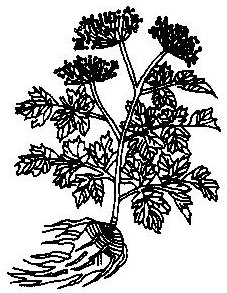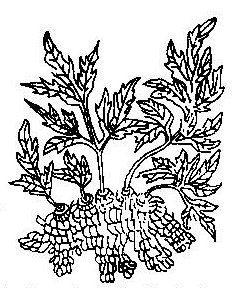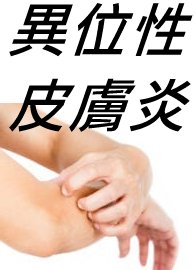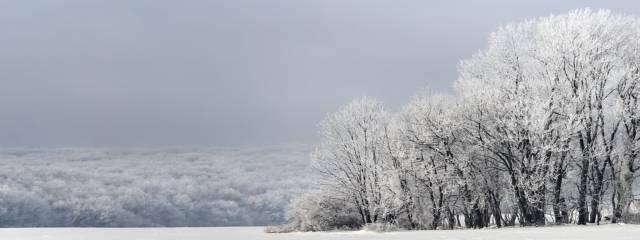| title | Notopterygium, Pubescent Angelica |
| release time | 2005/12/17 |
| source | Jade Knock Studio |
| keyword | Notopterygium, Pubescent Angelica |
Today, Notopterygium is used as the dried rhizome and root of the Apiaceae plant Notopterygium incisum Ting ex H.T.Chang or Notopterygium forbesii Boiss. Generally, those produced in Sichuan are called Chuan Qiang, mainly produced in Songpan, Maoxian, Lixian, Xiaojin, Nanping, and Pingwu in Sichuan, as well as Tengchong in Yunnan; those produced in the northwest are called Xi Qiang, mainly produced in Tianzhu, Minxian, Linxia, Wuwei, Zhangye, Jiuquan, and Tianshui in Gansu, as well as Haibei, Huangnan, Hainan, Hualong, Huzhu, and Xunhua in Qinghai. Notopterygium medicinal materials are divided into Can Qiang, Tiao Qiang, Zhujie Qiang, and Datou Qiang, with Can Qiang traditionally considered the best. Today, Pubescent Angelica is used as the dried root of the same family plant Angelica pubescens Maxim.f.biserrata Shan et Yuan. This product is commonly called Chuan Pubescent Angelica, mainly produced in Fengjie, Wuxi, and Wushan in Chongqing, Dujiangyan in Sichuan, Badong, Changyang, Hefeng, Wufeng, Xingshan, Shennongjia, Fangshan, Zhushan, and Zhuxi in Hubei, and Ankang in Shaanxi. Additionally, it is cultivated in Minxian and Tianshui in Gansu.
Materia medica research suggests that Notopterygium was once used as an alias for Pubescent Angelica in the Shennong Bencao Jing. By the Tang Dynasty, Notopterygium was officially distinguished from Pubescent Angelica in terms of efficacy. It is certain that from the Bencao Jing Jizhu onwards, the term Notopterygium in literature almost invariably refers to plants of the Notopterygium genus. From the name, the Bencao Jing mentions that Notopterygium has the name "Hu Qiang Shi Zhe," indicating its original production area was in the border region of present-day Qinghai and Gansu. The history of Notopterygium production in Sichuan can also be traced back to the Han Dynasty. By the Tang Dynasty at the latest, the Ganzi and Aba autonomous regions in Sichuan officially became the authentic production areas for Notopterygium, a tradition that continues to this day. Although ancient Pubescent Angelica mainly came from Apiaceae plants, the varieties were very confused. The Angelica pubescens Maxim.f.biserrata Shan et Yuan used today is likely the "Maozhou Pubescent Angelica" mentioned in the Bencao Tujing. From the perspective of production area evolution, the Tang Dynasty once graded Pubescent Angelica from the northwest as authentic, but by the Song Dynasty, Sichuan became the main production area for Pubescent Angelica, and the medicinal material was also called "Chuan Pubescent Angelica."
bubble_chart Variety IdentificationHan Dynasty physicians regarded Pubescent Angelica and Notopterygium as the same thing, with Notopterygium being an alias for Pubescent Angelica. The Bencao Jing states: "Pubescent Angelica, also known as Notopterygium, Qiang Qing, and Hu Qiang Shi Zhe."
By the Liang Dynasty, Tao Hong-jing began to distinguish Notopterygium and Pubescent Angelica based on production areas and medicinal characteristics. The Bencao Jing Jizhu states: "This state, county, and town are all Qiang lands. Notopterygium is thin and multi-jointed, soft and moist, with an extremely strong aroma. Pubescent Angelica from the northern part of Yizhou and western Sichuan is slightly white in color, large and loose in form, and its use is similar but slightly inferior. It has a single stem that stands alone, not shaken by the wind, hence the name Pubescent Angelica." In summary, Notopterygium is characterized by its production in Qiang lands (present-day Gansu), with thin, soft, moist, and multi-jointed medicinal material and a strong aroma. Pubescent Angelica comes from Sichuan, is lighter in color, loose and large, with a weaker aroma, and the plant is solitary.
The Notopterygium described by Tao is very close in characteristics to the current Notopterygium medicinal material known as "Silkworm Qiang." The original plant of Silkworm Qiang is mainly Notopterygium incisum, which has a high content of volatile oil, consistent with the "extremely intense aroma" mentioned in the "Ji Zhu." As for the Pubescent Angelica referred to by Tao, based on the analysis of medicinal properties and plant characteristics, it is likely to be a plant of the Heracleum genus in the Apiaceae family, or what later generations referred to as the Pubescent Angelica type.
However, it must be noted that although Tao Hong-jing distinguished Notopterygium from Pubescent Angelica based on the characteristics of the medicinal materials, he had insufficient understanding of the differences in their clinical effects. He merely thought that the medicinal properties of Notopterygium were more intense than those of Pubescent Angelica. For example, in the "Commonly Used Medicines for Various Diseases" section of the Bencao Jing Jizhu, under the categories of medicines for treating wind and tooth diseases, only Pubescent Angelica is listed, and Notopterygium is not mentioned. Since Tao essentially regarded Notopterygium as equivalent to Pubescent Angelica, influenced by him, medical practitioners before the Tang Dynasty did not make significant distinctions when using Notopterygium and Pubescent Angelica in medical prescriptions. Statistics show that in the "Treatise on Cold Damage and Miscellaneous Diseases," "Zhouhou Baiyi Fang," "Xiaopin Fang," "Liujuanzi Guiyi Fang," and "Shensu Fang," there are 33 prescriptions that use Pubescent Angelica, while only 4 mention Notopterygium. This indicates that before the Tang Dynasty, Notopterygium and Pubescent Angelica were not truly differentiated, and the term "Pubescent Angelica" in medical texts actually referred to various plants in the Apiaceae family, including Notopterygium.
Although the Zhenglei Bencao of the Song Dynasty followed the old view and still regarded Notopterygium and Pubescent Angelica as one species with two forms, the book's citation of the Bencao Tujing is highly significant. The Tujing states:
Pubescent Angelica and Notopterygium are found in the valleys of Yongzhou or in Longxi and Nan'an, but those from Shu and Han are the best. They sprout in spring, with leaves resembling green hemp, and bloom in clusters in June, either yellow or purple. When bearing fruit, those with yellow leaves grow on rocky surfaces, while those with green leaves grow in soil. This plant remains still in the wind but sways without wind, hence it is also called the "Swaying Grass." The roots are harvested in February and August, dried, and used. The Benjing states that the two are of the same category, but now people consider those with purple color and dense nodes as Notopterygium, and those with yellow color and lumpy form as Pubescent Angelica. According to Tao Yin-ju, Pubescent Angelica grows in the northern part of Yizhou in Sichuan, with a slightly white color and a large, hollow form, and its use is similar to Notopterygium. Nowadays, there is a large Pubescent Angelica in Sichuan, resembling Platycodon Root but larger, with a completely different aroma from Notopterygium, and it is slightly cold and less effective. There is also another Pubescent Angelica from Sichuan, similar in shape to Notopterygium, slightly yellow and very large, cut into inch-long pieces when harvested, and dried. Its aroma is also strong, somewhat similar to Notopterygium, with a hint of locust leaf scent. This is widely used in the capital with excellent efficacy, and it is believed to be the genuine form. However, some merchants select large Notopterygium as Pubescent Angelica, which is inappropriate. Generally, there are two types of this plant: the yellow one from Sichuan, with a honey-like fragrance, and the purple one from Longxi, called "Shanqian Pubescent Angelica" by the people of Qin and Long. Ancient prescriptions only used Pubescent Angelica, but modern prescriptions use both Pubescent Angelica and Notopterygium, which is a mistake.


It is noteworthy that since the differentiation of Notopterygium and Pubescent Angelica varieties in the Tang Dynasty, clinical physicians have placed great emphasis on the differences in their efficacy and application. Generally, Notopterygium is used for releasing exterior conditions, while Pubescent Angelica is more commonly used for expelling wind and eliminating dampness. Notopterygium is used for pain in the upper body, and Pubescent Angelica for pain in the lower body. However, most material medica scholars adhere to the old theories, considering Notopterygium and Pubescent Angelica as two forms of the same substance. For example, Su Song said: "Ancient prescriptions only used Pubescent Angelica, while modern prescriptions use both Pubescent Angelica and Notopterygium." Chen Jia-mo stated: "Since the Benjing mentions Notopterygium and Pubescent Angelica as the same species without separate entries, it is clear they are not two different substances." Li Shi-zhen said: "Pubescent Angelica and Notopterygium are two varieties of the same substance." The Rihuazi Bencao even states: "Pubescent Angelica should be the mother species of Notopterygium." These conservative discussions ignore the varietal differences between Notopterygium and Pubescent Angelica, sowing the seeds of confusion for future generations regarding the two varieties.
bubble_chart Historical Evolution of Authentic Regions
Pubescent Angelica from the Qiang region is named Notopterygium, known as "Protector of the Qiang Envoy" in the Bencao Jing and "Envoy of the Hu King" in the Bielu. The term "Protector of the Qiang Envoy" likely refers to the envoys of the Han court's "Protector of the Qiang Colonel," as recorded in the Book of the Later Han: "A Protector of the Qiang Colonel was established, holding the imperial tally to command them." The "Hu King" refers to the Xiongnu, and the "Envoy of the Hu King" refers to the envoys of the Qiang and Hu, indicating that this unique (Qiang) Notopterygium primarily grew in the Gansu-Qinghai region, the border between the Han and Qiang at that time.
Tao Hong-jing distinguished Notopterygium and Pubescent Angelica based on their regions of origin, believing that Notopterygium came from the Qiang region, while "Pubescent Angelica comes from the northern part of Yizhou and the western Sichuan region." However, in reality, Notopterygium was also produced in the Shu region during the Han Dynasty, as recorded in the Bencao Jing Bielu: "It grows in the valleys of Yongzhou and Longxi, and in Nan'an." Yongzhou and Longxi are in the present-day Gansu-Shaanxi region, while Nan'an is modern-day Leshan City in Sichuan. Additionally, according to the Book of the Later Han: "The land of Zuodu County produces the divine medicine of longevity, where the immortal Shan Tu resided." Li Xian's commentary cites the Liexian Zhuan: "Shan Tu loved riding horses, and when his horse broke its leg, a mountain Taoist taught him to take Rehmannia, Chinese Angelica, Notopterygium, and Scrophularia Root." According to the Historical Atlas of China, Zuodu County was near modern-day Hanyuan County in Sichuan, which is one of the authentic production areas of Notopterygium today.
In contrast to the antagonism during the Qi and Liang periods when Notopterygium came from Gansu and Pubescent Angelica from Sichuan, starting from the Tang Dynasty, the authentic production region of Notopterygium shifted from Gansu to Sichuan, while Pubescent Angelica became one of the genuine regional materia medica of Gansu. According to the New Book of Tang: Geography, the prefectures in the Jiannan Circuit (modern-day Sichuan) that offered Notopterygium as tribute included Maozhou Tonghua Prefecture, Weizhou Weichuan Prefecture, Songzhou Jiaochuan Prefecture, Dangzhou Jiangyuan Prefecture, Jingzhou Jingchuan Prefecture, Zhezhou Pengshan Prefecture, and Gongzhou Gonghua Prefecture. These prefectures are mostly in the modern-day Ganzi and Aba Autonomous Prefectures, while none of the prefectures in the Longyou Circuit (modern-day Gansu) offered Notopterygium as tribute. The Qianjin Yifang: Yaochu Zhoutu also records that Maozhou in the Jiannan Circuit (modern-day Maowen) produced Notopterygium, while Dangzhou in the Longyou Circuit (modern-day Min County, Gansu) produced Pubescent Angelica. Pubescent Angelica from Sichuan was also famous during the Tang Dynasty, as Lin Daoren's "Xianshou Lishang Xuduan Mifang" specifically mentions the reputation of Sichuan Pubescent Angelica.
After the Song Dynasty, both Notopterygium and Pubescent Angelica were considered authentic when produced in Sichuan. For example, the Bencao Tujing states: "Pubescent Angelica and Notopterygium are best when produced in Shu Han." The Bencao Mengquan notes: "They mostly grow in Sichuan and are also produced in Longxi." The "Materia Medica Chengyal Banji" states: "Those produced in Shu Han and Western Qiang are of good quality." The Bencao Pinhui Jingyao, under the entries for Notopterygium and Pubescent Angelica, both note: "Those produced in Shu Han are of good quality." In modern times, Chen Renshan's "Yaowu Chuchan Bian" also states: "Notopterygium produced in Dajianlu, Guan County, Long'an Prefecture, and Jiangyou County in Sichuan is of good quality."
Thus, it is evident that Pubescent Angelica and Notopterygium have a long history as genuine regional materia medica in Sichuan. The classification of Notopterygium as a "Western medicine" in "Chinese Genuine Regional Materia Medica" is somewhat one-sided.
bubble_chart Other Related Items







